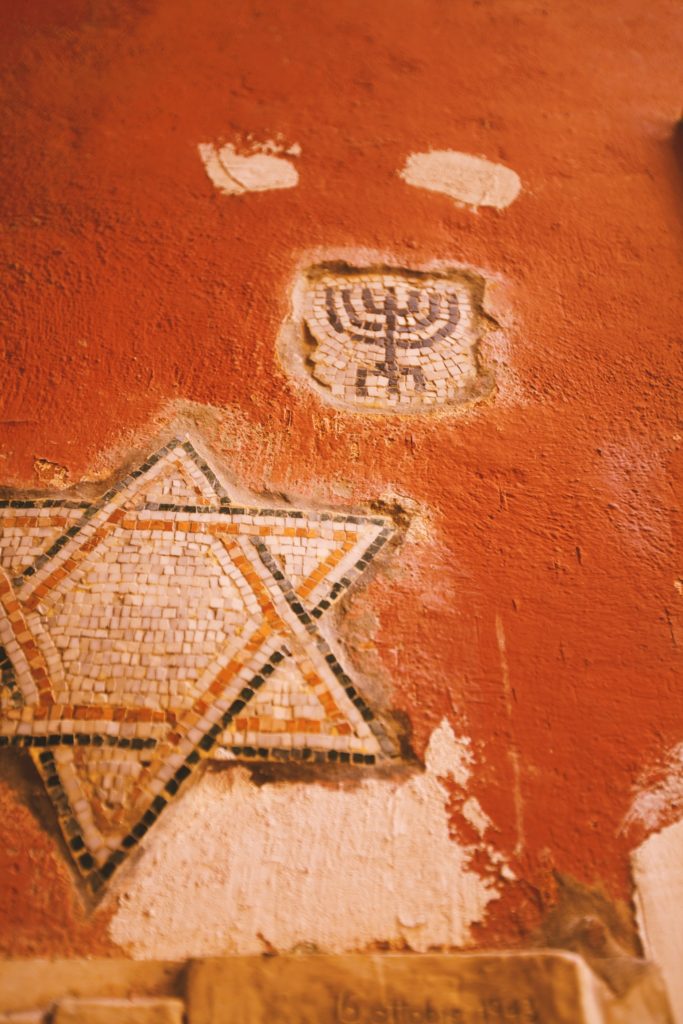
Originating in Canaan (a Semitic-speaking region and civilization in the Ancient Near East also known as the Levant) approximately 3800 years ago, Judaism is recognized as the oldest living monotheistic (one deity) religion. This module will provide a brief overview of the historical foundations of Judaism, introduce the sacred text referred to as the Hebrew Bible also known as the Tanakh, and address the wide range of different ways Judiasm is practiced worldwide today.
Objectives for this module:
- recognize significant historical people and events in Jewish history
- describe shared beliefs and practices in the Tanakh using theoretical frameworks from the field of religion
- situate a contemporary Jewish community within its specific social and historical contexts based on global flows and local circumstances
Identity, Culture, Belief and Memory
There are approximately 14 million Jewish people worldwide today. Although Judaism is the smallest world religion in terms of population, it is among the most influential religions in the world. Since the holocaust, the majority of Jewish people have come to live in the United States (5-6 million) and Israel (six million), with several large populations in Europe, Latin America and Canada and smaller communities throughout Asia, Africa and Arabic countries in the Middle East. Jewish places of worship, known as synagogues, are located all over the world as the Jewish diaspora has created a globally diversified Jewish population comprised of a variety of Jewish communities with different religious and cultural practices.
History and Jewish Memory
Understanding history and interpreting the past shapes Jewish identity and collective memory. Jewish religion is best understood through the lens of the Jewish experience, which is comprised of several thousand years of miraculous and horrific events. From sacred stories in the Hebrew Bible to the contemporary struggle in the modern state of Israel, the history of Judaism paints a story of persistence and struggle with ancient empires, modern regimes and contemporary politics. The history lesson will provide a brief overview of historical Judaism, address people and events significant to Jewish history, describe the historical relationship between Jewish and non-Jewish communities,and explain how significant people and events in Jewish history contribute to Jewish identity, culture and religious practice.
The Tanakh
The Hebrew Bible, or Tanakh, is a collection of 24 books comprised of many different literary forms such as poems, stories, songs, laws and narratives. This sacred text not only provides a foundation for shared beliefs and practices, it also a shared history that shapes Jewish worship, culture, and identity. This lesson will address the composition of the Tenakh, significant elements in the Tenakh, and the role of the Tenakh in Judaism.
Globalization, Diaspora and Change
Over thousands of years, a diverse range of different Jewish communities developed in different areas of the world. As Judaism spread around the world (usually through forced migrations), different communities experienced unique circumstances that resulted in distinctive histories, languages, religious practices, customs, and culture. This lesson will draw from theoretical frameworks introduced in the Globalization & Diaspora lesson to address diversity within global Judaism today.
This module will provide a brief introduction to the history of Judaism, address shared beliefs and practices in the Tanakh, and explore the wide range of diverse contemporary Jewish communities and traditions world wide.
Readings & Resources:
- Judaism, an introduction, Khan Academy
- Introduction to Judaism, the Holocaust Encyclopedia
- Library of Judaica, University of Florida
Your Score:
Your Ranking:
For Discussion: Write about your personal experiences with and existing knowledge about Judaism. If you are not Jewish, describe how and where you have learned about Jews and Judaism. If you consider yourself Jewish, explain what it means to be Jewish from your perspective and describe any unique experiences, if any. (min 500 words and respond to at least two student posts.)
When you complete the discussion, go to the Historical Judaism lesson.
